Supertest: U.S. Tier VIII Premium Aircraft Carrier Hornet
7 min readHistorical Background
USS Hornet was the third ship of the Yorktown-class of aircraft carriers from the U.S. Navy. The ship was laid down in September 1939, launched in December 1940 and commissioned in October 1941.
While her career was a short one, it was also intense with her first major action of the war being the famous Doolittle Raid. On the 18th of April 1942, 16 B-25B Mitchell bombers that had been specially modified for the mission took off from Hornet to bomb strategic targets in Japan. While the damage from the bombing was quite low, it had a profound psychological impact on both sides.
It was at this moment Japan knew… they f*cked up. (Technically, it was more with Midway but still wanted to place that one.)
Later on, Hornet took part in the Battle of Midway during which her squadrons helped in sinking the heavy cruiser Mikuma, heavily damage the heavy cruiser Mogami and also damage a destroyer. However, she also lost a tremendous amount of planes in the battle either from Japanese defenses or from them being forced to ditch in the ocean when they ran out of fuel after failing to find the enemy fleet.
By the end of September 1942, Hornet was the only operational carrier in the South Pacific. Enterprise and Saratoga were damaged in August and Wasp was sunk in September. It’s only in October that Enterprise would join the party again, right in time for the Batlle of Santa Cruz Islands. Sadly for Hornet, this would be her last battle. On the 26th, she was attacked by several waves of Japanese torpedo bombers and dive bombers. She was hit by a total of three bombs, two torpedoes and two Aichi D3As that both crashed on the ship.
At this point, the ship was dead in the water with no power. She couldn’t launch or recover planes forcing her squads to either land on Enterprise or in the Ocean. As she was towed by the cruiser Northampton and the power was about to be restored, a final wave of Japanese torpedo bombers appeared. While the first eight failed to hit Hornet or were shot down, the last one scored a hit that ruined any chance for the ship to be saved. The order was given to abandon the ship and the escorting destroyers had to scuttle her. Surprisingly, Hornet refused to go down and absorbed 400 hits from 127 mm guns as well as nine torpedo hits (although many of these failed to detonate). It would be the Japanese destroyers Makigumo and Akigumo that finished her off with four Long Lance torpedoes. She finally sank on the 27th of October 1942, bringing 140 of her 2 200 sailors to the bottom.
In World of Warships, Hornet appears as she was after her refit of January 1942. She carries two main squadrons, being Torpedo bombers and AP Dive bombers. Just like the recently introduced supercarriers, she also possesses a tactical bomber squadron composed of B-25s (although there is only 6 instead of 16).
Ship’s preview
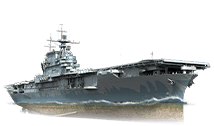
Ship’s commemorative flag

Ship’s camouflages


For the classic reminder, this is a ship in testing, anything can change so don’t look at her like she would already be released.
![]()
Modules
Hull | Torpedo Bombers | Dive Bombers | Propulsion |
|
|
General Characteristics
| Tier | VIII |
| Health | 50 000 HP |
| Torpedo damage reduction | 28 % |
| Displacement | 25 484 tons |
| Dimensions | |
| Overall length | 252.17 m |
| Beam | 32.0 m |
| Overall height (keel to the highest point on the ship) | 31.7 m |
| Freeboard | 16.48 m |
| Aircraft on deck | |
| Torpedo Bombers | 20 |
| Dive Bombers | 20 |
| Tactical Bombers | 6 |
| Secondary Armament | |
| 127 mm/38 Mk.12 on a Mk.24 mount | 8 x 1 127 mm |
| Maximum Firing Range | 4.500 km |
| Anti-Air Armament | |
| 127 mm/38 Mk.12 on a Mk.24 mount | 8 x 1 127 mm |
| 28 mm Mk.1 on a Mk.2 mount | 4 x 4 28 mm |
| 20 mm Oerlikon on a Mk.4 mount | 30 x 1 20 mm |
| Maximum speed | 32.5 knots |
| Turning Circle Radius | 1 060 m |
| Rudder Shift Time | 12.1 s |
| Surface Detectability | 14.22 km |
| Air Detectability | 11.02 km |
| Consumables | ||
Slot 1 | Slot 2 | |
Damage Control Party  Work time: 60 s Work time: 60 sCooldown: 90 s | Fighter  Number of charges: 4 Number of charges: 4Work time: 600 s Cooldown: 40 s Patrol Radius: 3.0 km Planes in a squadron: 4 | |
Torpedo Bombers
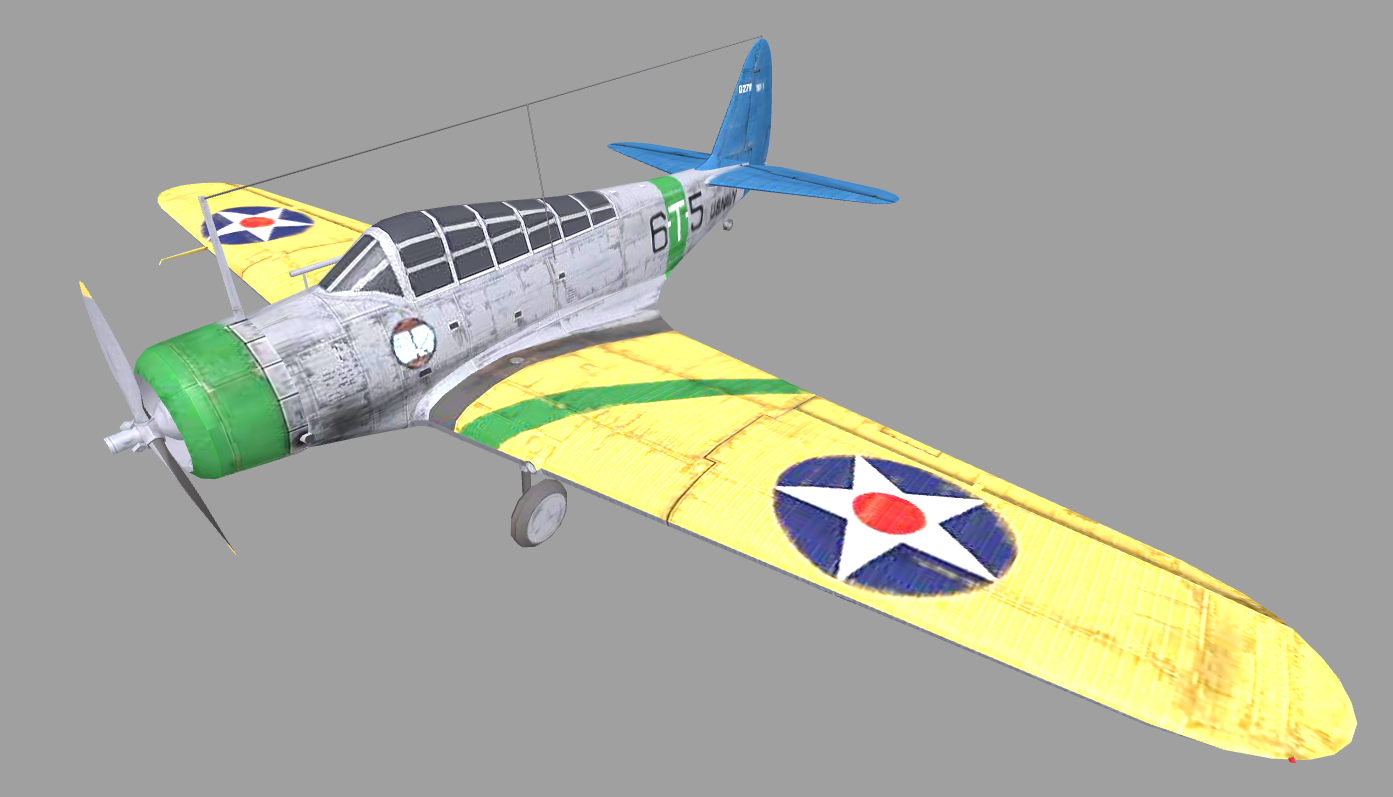
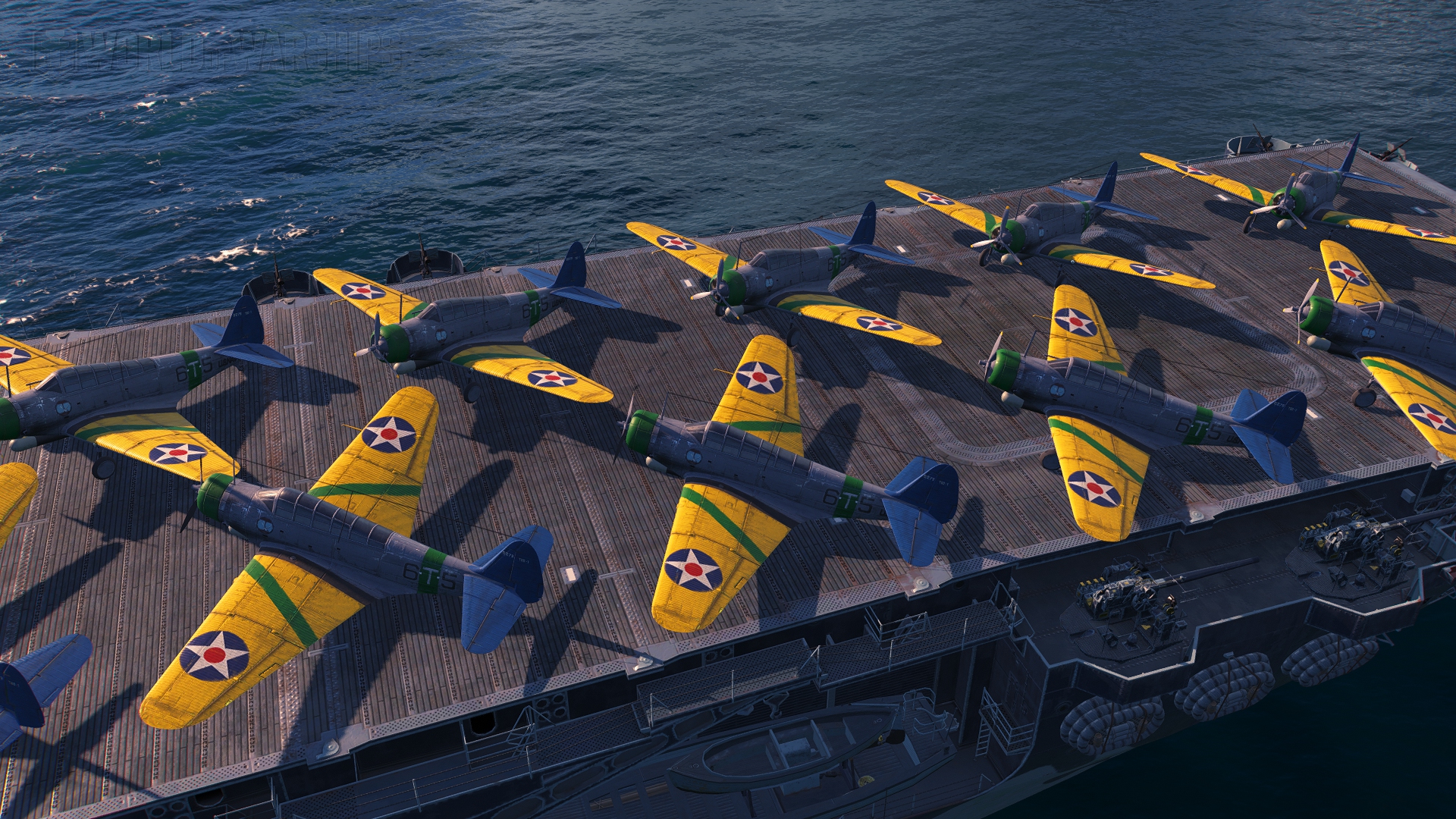
Torpedo bomber – Douglas TBD Devastator | ||
| Tier | VIII | |
| Hitpoints per plane | 1 710 | |
| Cruise speed | 112 knots | |
| Maximum speed | 147 knots | |
| Engine boost time | 20 s | |
| Engine boost reload time | 40 s | |
| Size of attacking flight | 5 | |
| Aircraft per squadron | 10 | |
| Torpedo type | Torpedo Mk.7 | |
| Torpedoes per plane | 1 | |
| Maximum torpedo damage | 5 567 | |
| Maximum torpedo range | 3.0 km | |
| Torpedo speed | 35 knots | |
| Torpedo arming time | 3.66 s | |
| Flooding chance | 45% | |
| Detectability range | 10.0 km | |
| Aircraft restoration time | 62 s | |
| Aircraft on deck | 20 | |
| Consumables | ||
Slot 1 | Slot 2 | Slot 3 |
Engine Cooling  Number of Charges: 2 Work time: 5 s Cooldown: 80 s | Patrol fighter  Number of Charges: 3 Work time: 60 s Cooldown: 10 s Aircraft per squadron: 5 Patrol radius: 3.0 km | Repair  Number of Charges: 3 Number of Charges: 3Work time: 5 s Cooldown: 180 s Repair speed: 10% HP/s |
Dive Bombers
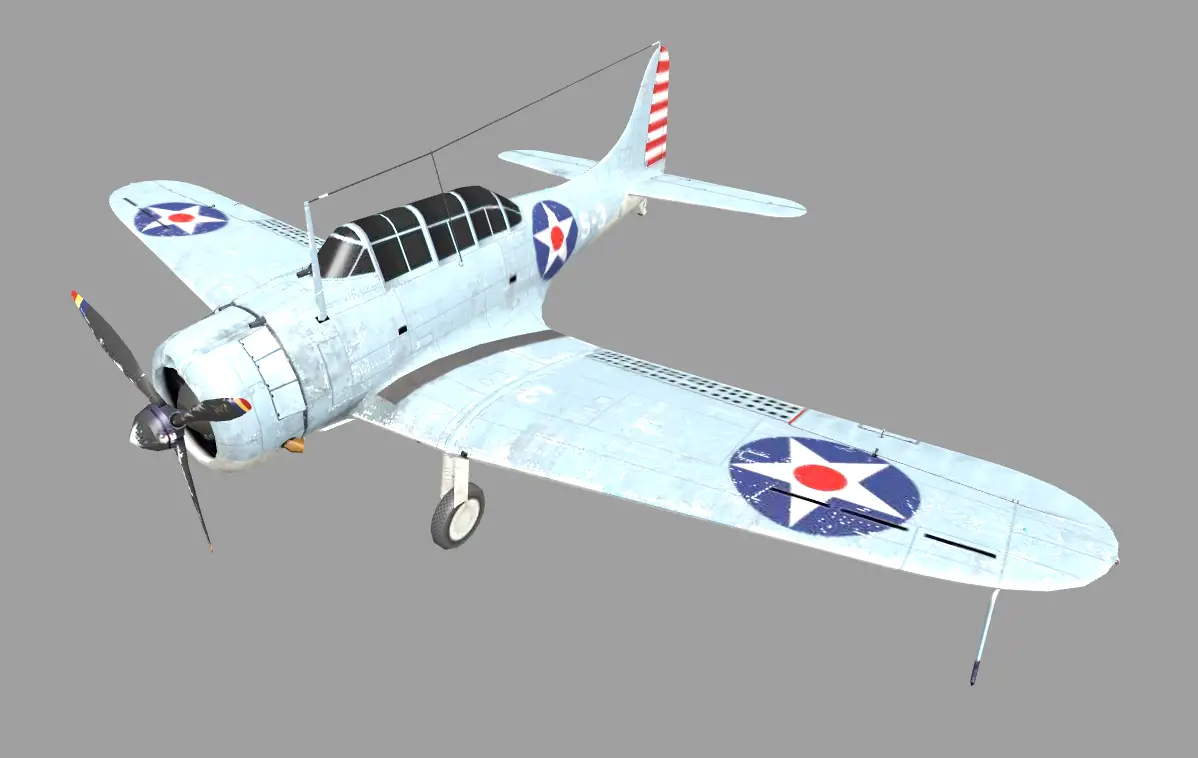
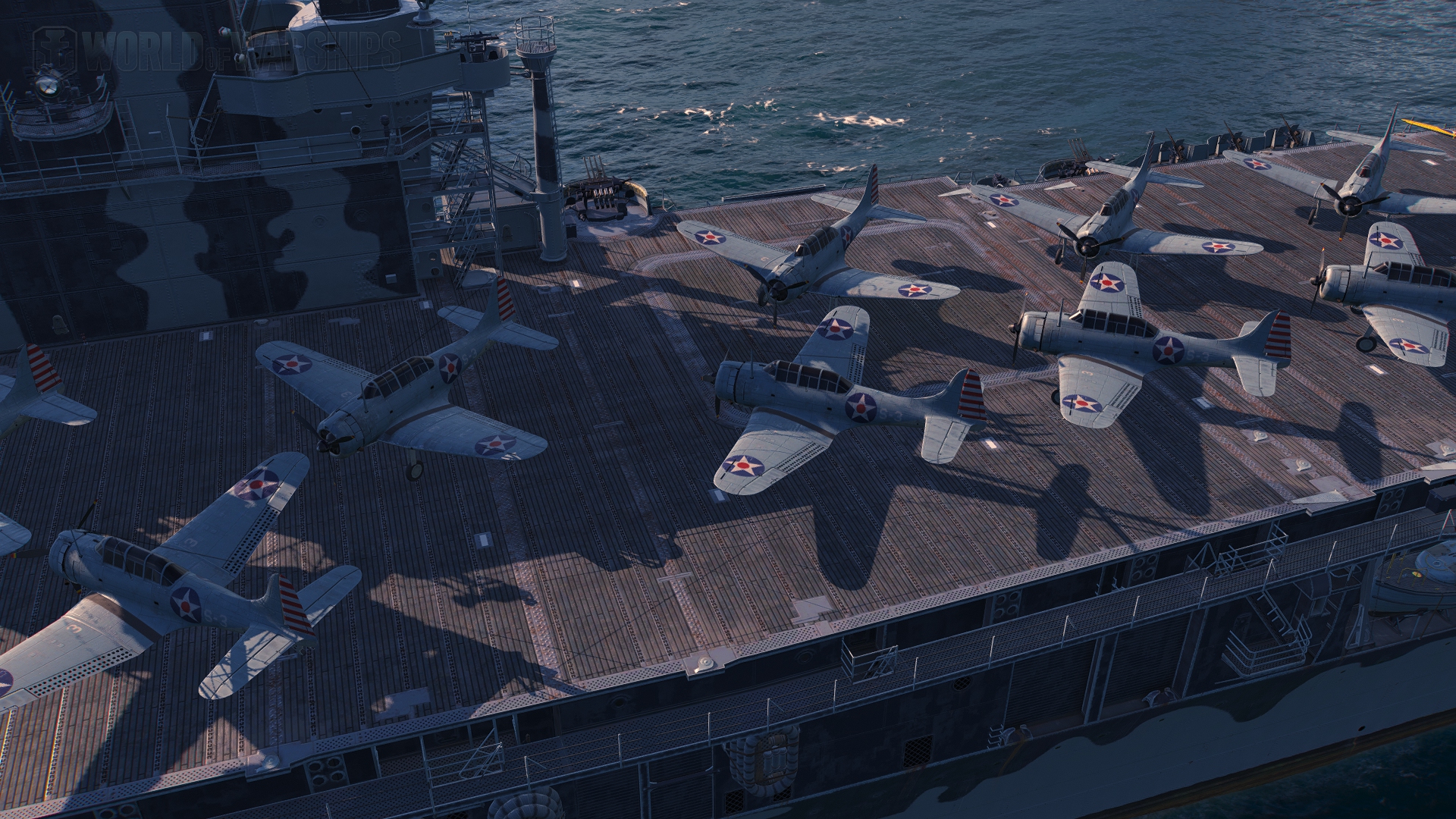
Dive bomber – Douglas SBD-5 | |
| Tier | VI |
| Hitpoints per plane | 1 890 |
| Cruise speed | 122 knots |
| Maximum speed | 157 knots |
| Engine boost time | 20 s |
| Engine boost reload time | 40 s |
| Size of attacking flight | 5 |
| Aircraft per squadron | 10 |
| Bomb type | AN-M60 |
| Bomb per plane | 1 |
| Maximum bomb damage | 3 600 |
| AP penetration capacity | 328 mm |
| Projectile Detonator | 0.03 |
| Detonator threshold | 36 mm |
| Detectability range | 10.0 km |
| Aircraft restoration time | 62 s |
| Aircraft on deck | 20 |
| Consumables | ||
Slot 1 | Slot 2 | |
Engine Cooling  Number of Charges: 2 Work time: 5 s Cooldown: 80 s | Patrol fighter  Number of Charges: 3 Work time: 60 s Cooldown: 10 s Aircraft per squadron: 5 Patrol radius: 3.0 km | |
Tactical Bombers
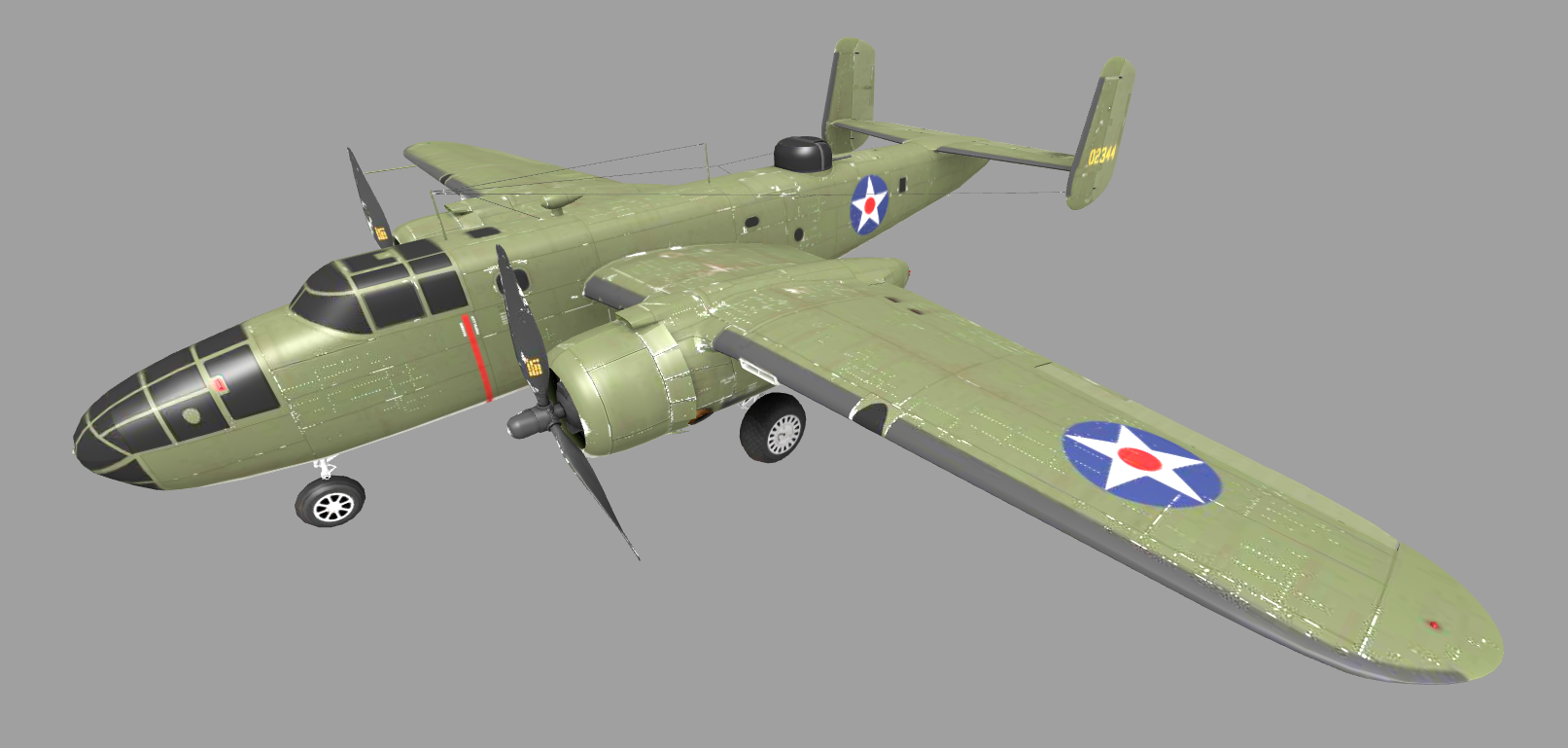
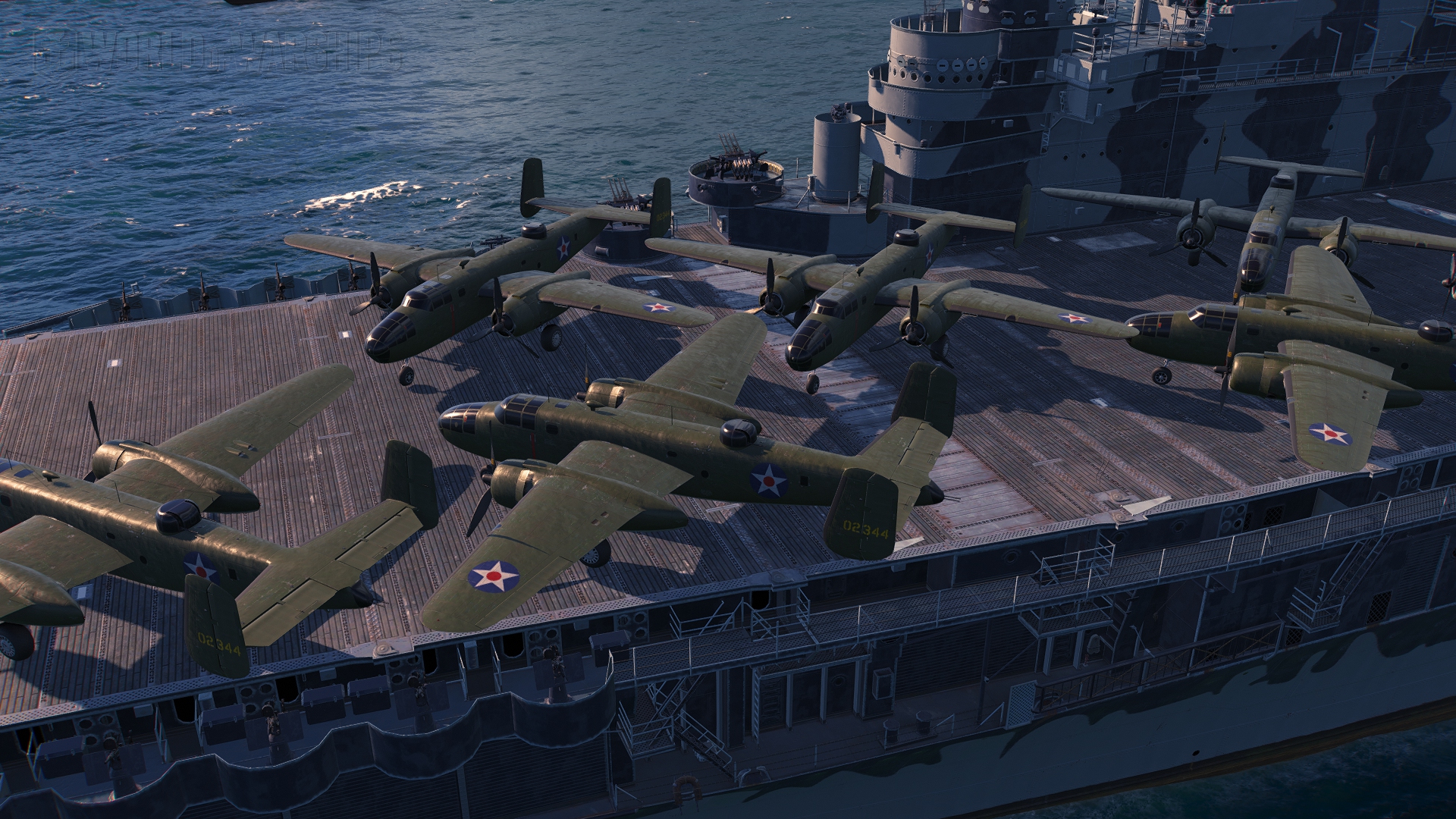
Tactical bomber – Mitchell B-25 | |
| Tier | VIII |
| Hitpoints per plane | 4 890 |
| Cruise speed | 105 knots |
| Maximum speed | 140 knots |
| Engine boost time | 30 s |
| Size of attacking flight | 6 |
| Aircraft per squadron | 6 |
| Bomb type | AN-M64 |
| Bomb per plane | 4 |
| Maximum bomb damage | 7 300 |
| HE penetration capacity | 42 mm |
| Explosion size | 1.58 |
| Fire chance | 41 % |
| Detectability range | 10.0 km |
| Restoration time | 160 s |
Secondary Armament
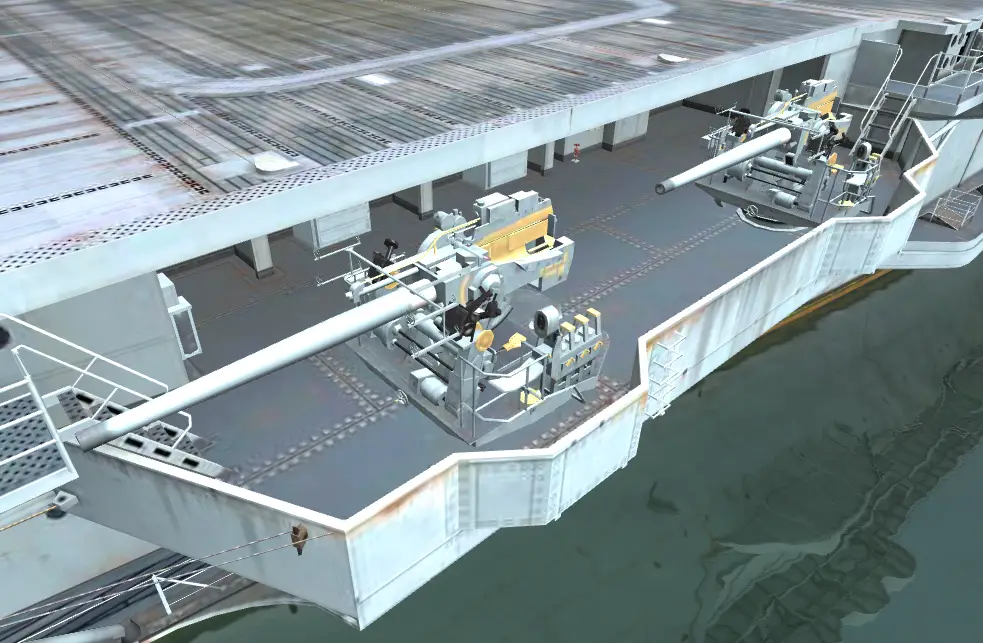
| 8 x 1 127 mm/38 Mk.12 on a Mk.24 mount | |
| Maximum Firing Range | 4.500 km |
| Reloading Time | 6.0 s |
| Sigma | 1.00 sigma |
| Shells | |
| Type of Projectile | HE – 127 mm HE Mk32 |
| Alpha Damage | 1 800 HP |
| HE penetration | 21 mm |
| Explosion Size | 0.38 |
| Chance to Cause Fire | 5 % |
| Projectile Speed | 792 m/s |
| Air Drag | 0.347 |
| Projectile Mass | 24.5 kg |
Anti-air Armament
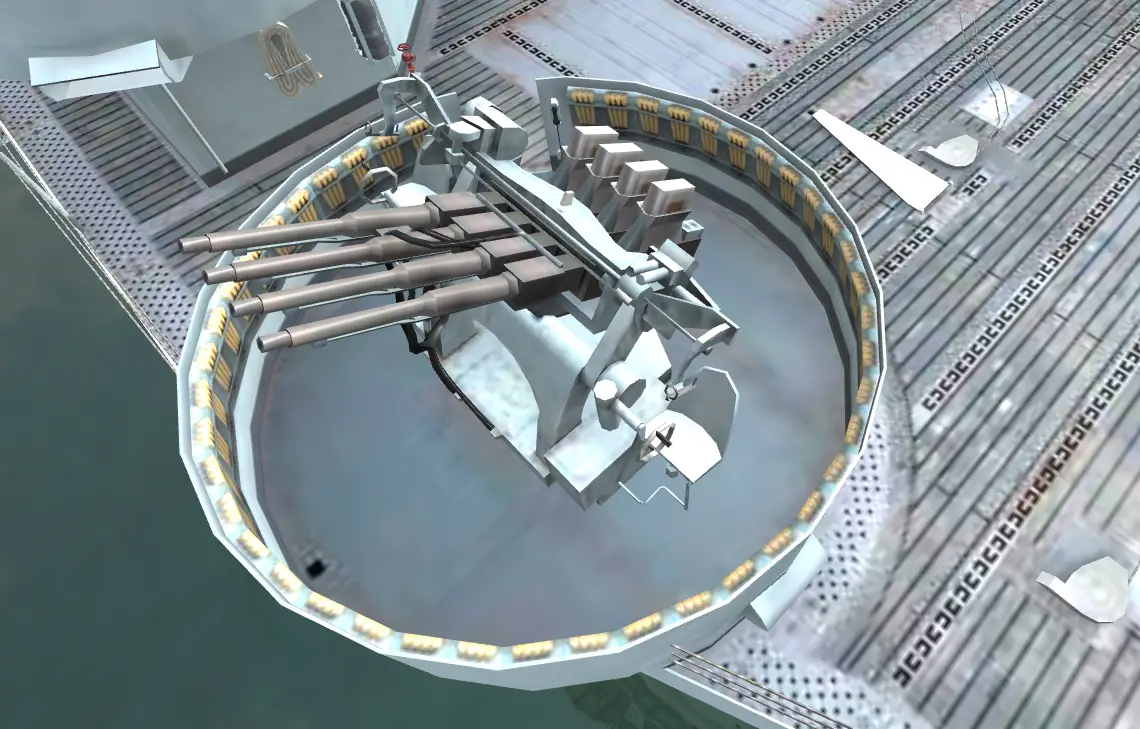
| 8 x 1 127 mm/38 Mk.12 on a Mk.24 mount | |
| Sector range | 0.1 km – 5.8 km |
| Hit chance | 100 % |
| Sector’s damage | 25 |
| Sector’s damage frequency | 0.29 s |
| Sector’s damage per second | 88 |
| Flak clouds number | 4 |
| Flak cloud damage | 1 400 |
| 4 x 4 28 mm Mk.1 on a Mk.2 mount 30 x 1 20 mm Oerlikon on a Mk.4 mount | |
| Sector range | 0.1 km – 2.4 km |
| Hit chance | 95 % |
| Sector’s damage | 77 |
| Sector’s damage frequency | 0.29 s |
| Sector’s damage per second | 270 |
The Armor
External armor protection

Internal deck armor protection

Front and rear protection of the middle section
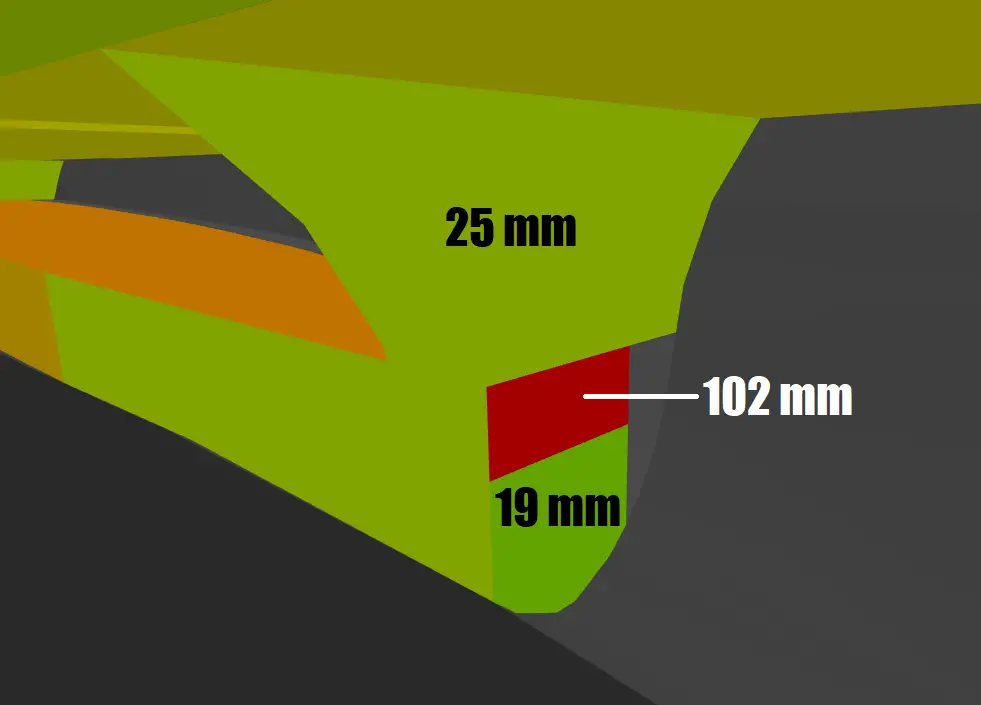
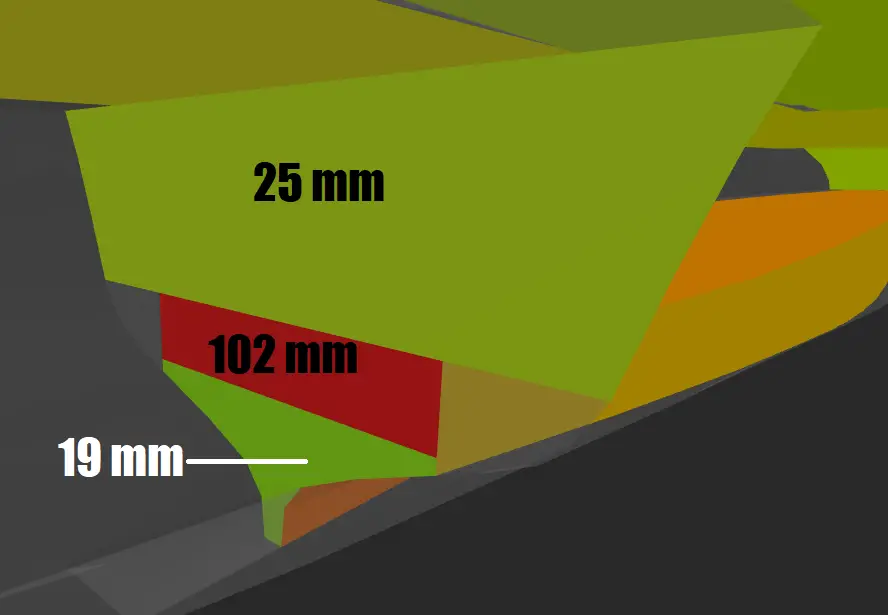
Citadel armor protection

Personal Opinion
As of right now, the Hornet looks really strong, walking right in the tracks of Enterprise.
First and foremost, the reserves on both types of squadrons are high and on top of that, the restoration time is really short, giving the ship a lot of freedom when it comes to which targets you can go for without risking losing too many planes. It isn’t up to the level of Kaga but is still a valuable asset.
The torpedo bombers being able to drop five torpedoes per run are on paper able to kill a lot of cruisers on just two runs. Of course, it will depend on the spread of the torpedoes but rare are the carriers able to do that at their respective tiers. In any case, considering the stats of the dive bombers, these torpedo bombers are definitely the main source of damage of this ship.
Now sadly, nothing is perfect. The dive bombers look quite terrible on paper. The thing is that they are not dive bombers. When looking at their entry in the gameparams file, it turns out that they have the same characteristics as the British carpet bombers. This would mean that these are the first carpet bombers dropping AP bombs. I also discovered that their capacity to maneuver in attack mode is abysmal. It’s way worse than the Japanese attack aircraft which means that they will be unable to turn when attacking. This will give the target all the freedom in the world to angle accordingly and avoid the drop. The reticule isn’t a saving grace either. It is the same size as the reticule of Enterprise but with a 50/50 spread between the outer and inner layer while Enterprise has 25/75, making it less likely for the bombs to hit their intended target.
As the rotten cherry on top, the bombs themselves have a high arming threshold of 36 mm. This means that they are very likely to go right through cruisers without having the time to detonate.
Now, for the final squadron of tactical bombers, these B-25 can basically be called a pocket squadron straight from a Franklin D. Roosevelt. The planes are slow and turn like crap but their HP pool is huge and they have a fairly small reticule for the 24 bombs that they can drop on target. Looking at the values, the reticule also seems to be elongated perpendicularly to the planes, meaning that they will be better at dropping from the side compared to other bombers.
Thank you for reading this article!
Don’t hesitate to subscribe to our notifications to make sure that you don’t miss any future articles.
Have a good one and see you soon!

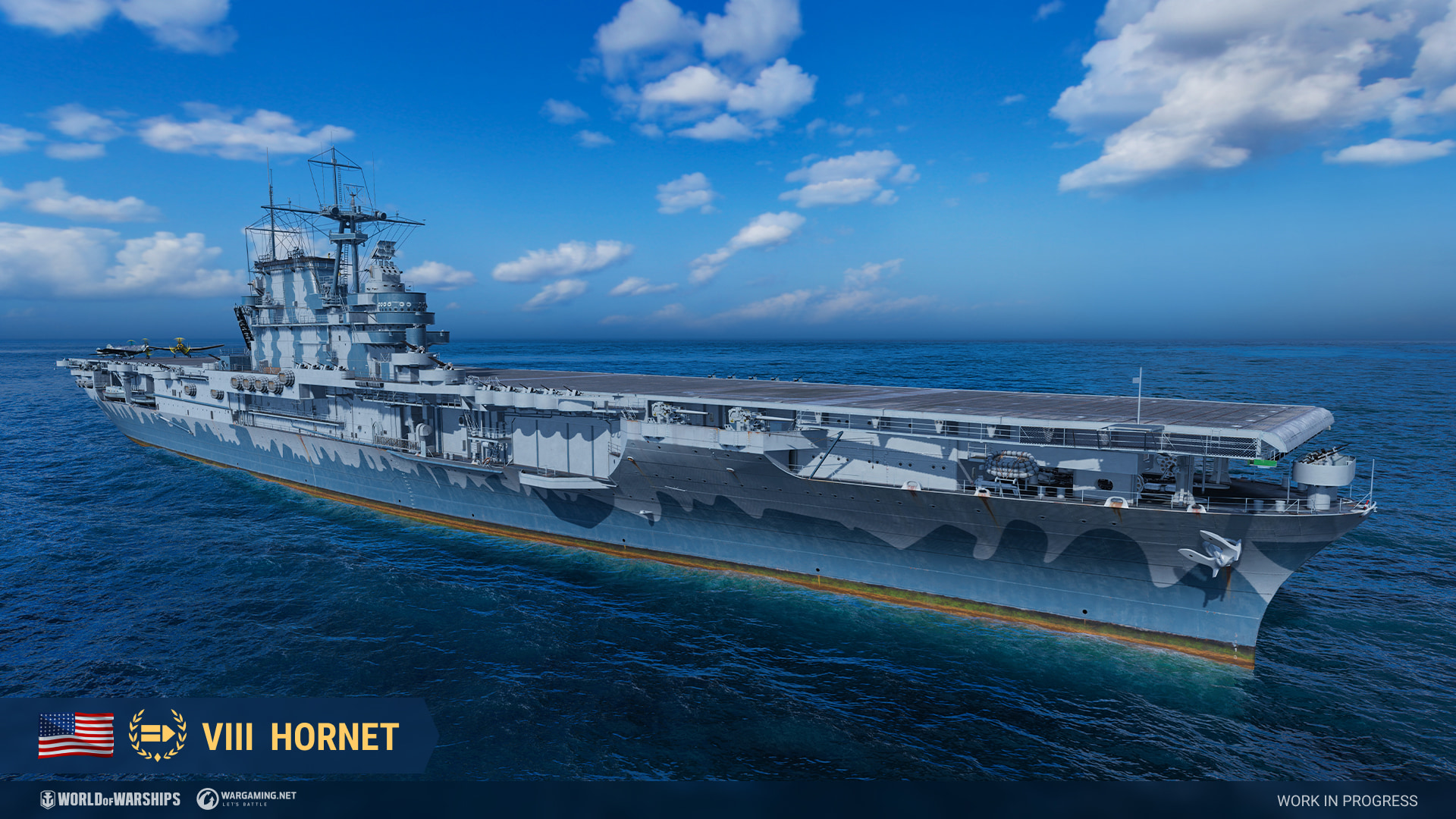


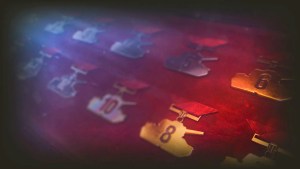


I have been waiting for this ship a long time, with the added hope it would carry B-25s, and I don’t even play CVs. It’s just so cool!
The ship looks awesome!! Can’t wait to get one. But, I wish WG Dev would made the Planes of the US like the real ones. US Planes HP are to low is the game right now. US Planes were Armored in WW2!!! Right now, The planes are shot down so fast in Tiers VI-X the CVs make no impact in Rank or Random play.